

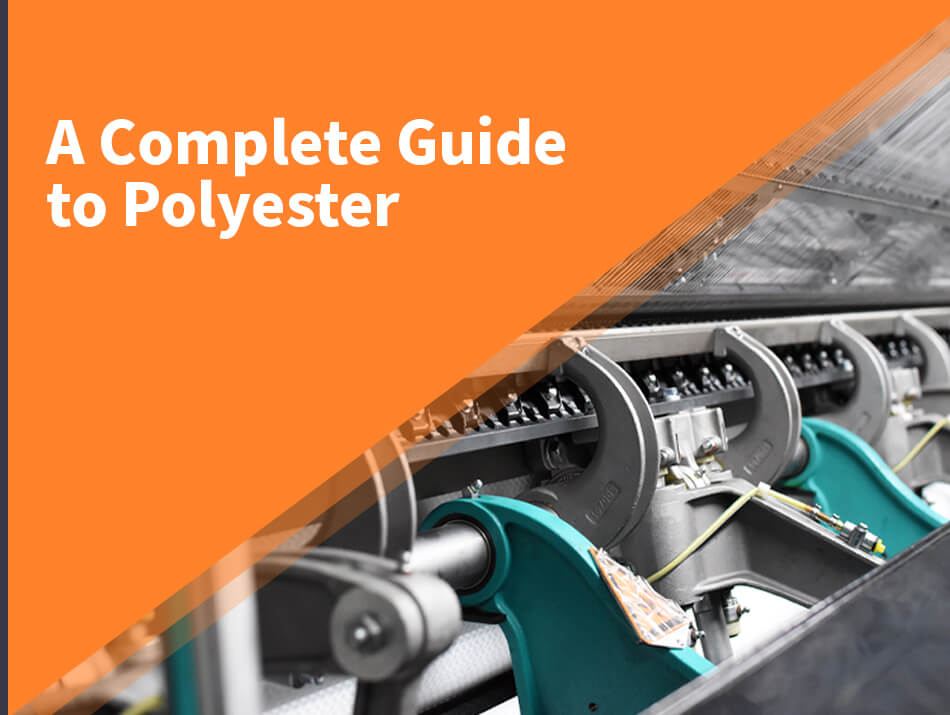
You have probably seen clothing that says, “100% polyester”. But what is Polyester, and how can it be used? Find out what you need to know about polyester before using it for your project or product.
Find Your Custom Textile Solution Today!
Polyester is a synthetic or man-made fiber material. Shortened from its technical name, polyethylene terephthalate (PET), which, if born, would be its legal name, is made by mixing ethylene glycol and terephthalic acid. Made in a lab from chemical compounds, polyester is a kind of plastic.
Used for a countless number of applications for its strength and ability to retain its shape, polyester is a base component for several industrial, commercial, and household products.
And whereas polyester had suffered a bad reputation for its negative effect on the environment, now there are ways to make it more sustainable. Read on to learn more about the power of polyester.
Since polyester is a synthetic fiber, it doesn’t come from a plant like cotton. Instead, polyester is chemically produced from derived compounds. While the process varies depending on the different types of polyester and the manufacturer, there are five basic steps to creating polyester:
Depending on the desired outcome, various ways to modify this production process exist. For example, to produce soft and smooth fabrics, the fibers will be adjusted to create a thin filament. There are also ways to alter the ethylene used in the process. When producing plant-based polyester, the source of ethylene is commonly sugarcane rather than petroleum.
Polyester has numerous attributes, many of which are unique to the fabric. These benefits are why polyester became so popular and is still widely used today. Some important polyester characteristics are:
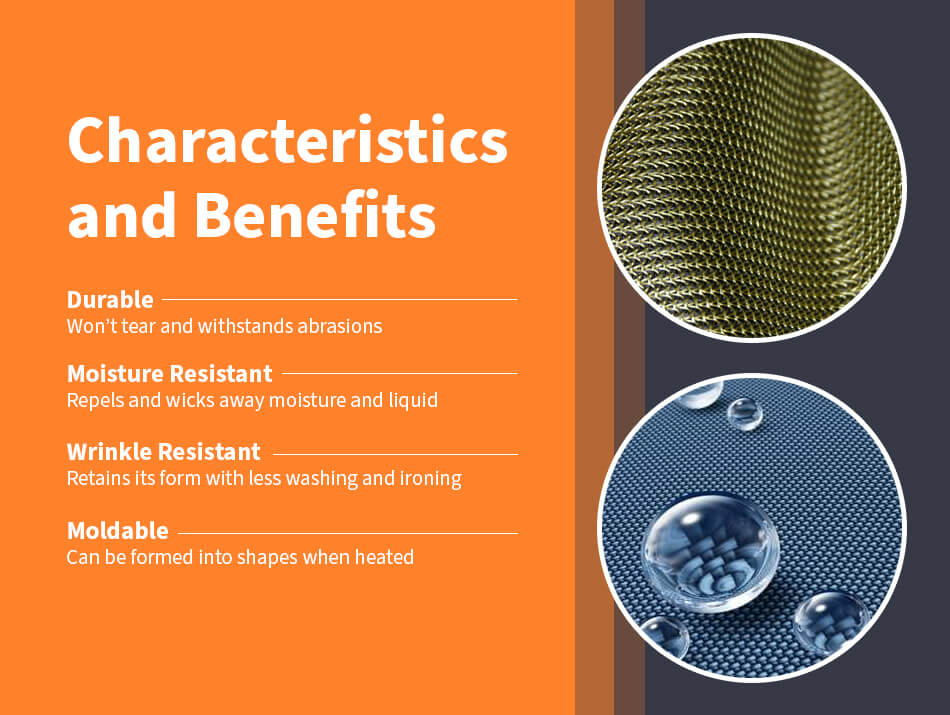
Like any fabric, polyester has characteristics that may draw consumers away from it or might make the material less ideal for certain applications. For one, most types of polyester aren’t biodegradable, though researchers in textile advancements are striving for polyester that breaks down at the same rate materials such as cotton do.
Polyester also isn’t the most luxurious fabric, which means it can feel coarse on its own. Cheap or poorly made polyester will feel rough, especially on sensitive skin. The texture of polyester can depend on how the fibers were made or tethered together. While some polyester fabrics tend to be coarse and itchy, others can be smooth and silky. Clothing manufacturers can also blend polyester with other materials for a more comfortable garment.
There are a few types of polyester, with the most significant difference being what they’re made of. Some types of polyester are more suitable for particular applications because of their distinct characteristics. Let’s take a closer look at three types of polyester fabric.
Polyethylene terephthalate is the most common type of polyester. Also known as PET, polyethylene terephthalate is the most produced polyester. Polyethylene terephthalate is durable and inexpensive to produce, making it ideal for most applications.
While polyester can be recycled, it’s most often recycled in the form of bottles rather than clothing fibers. Compared to the amount of polyester used in fabrics and clothes, less than 15% is actually recycled and reused in new textiles. That’s where plant-based polyester comes in.
Plant-based polyester is made with bio alternatives to petroleum. The ethylene needed for the polyester comes from plants like sugar cane or bio-waste, or waste that mainly includes organic materials, such as food scraps or sawdust. Using these biodegradable materials helps reduce the use of petroleum resources.
While it’s not produced as heavily as PET due to higher costs, plant-based polyester fabric is biodegradable. This characteristic makes plant-based polyester more sustainable and better for the environment, given that the crops are farmed sustainably. This polyester type may not be as popular or durable as other types; however, it is more environmentally sustainable.
PCDT is similar to PET, though their chemical structures are different. PCDT stands for poly-1, 4-cyclohexylene-dimethylene terephthalate, which is what makes up this polyester. PCDT polyester is less popular than PET, even though it is often more elastic and durable. These properties make this polyester ideal for heavy-duty applications like curtains or upholstery.
Polyester is found in several products and industries. Its durability makes it ideal for various items ranging from clothing to consumer products and industrial applications:
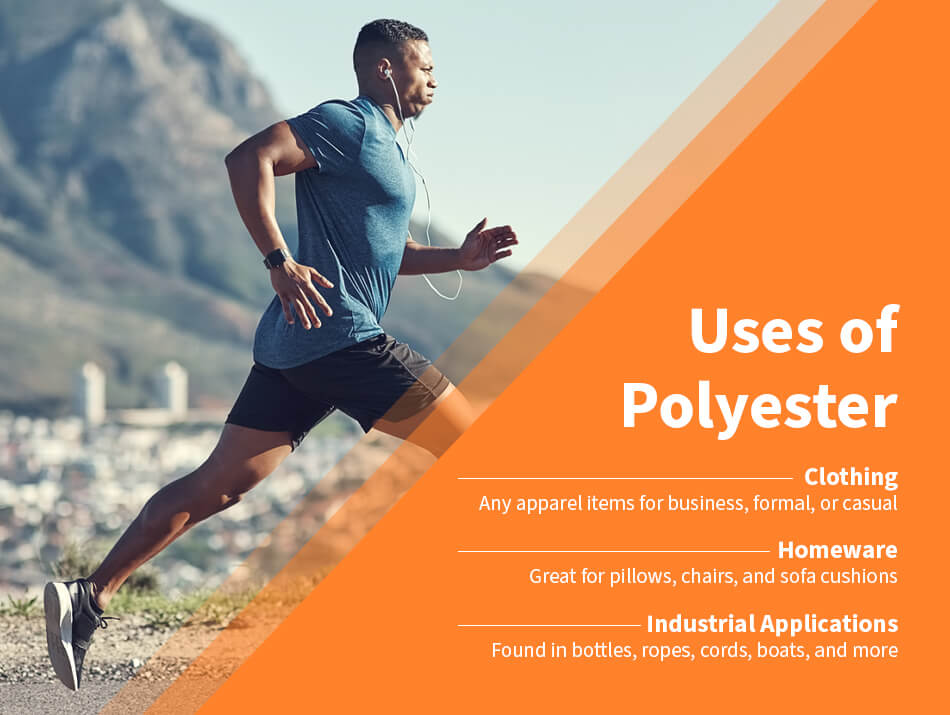
Polyester is also commonly used as stuffing for blankets, bedding, and sleeping bags because of its ability to insulate. Many everyday items are made with polyester, many of which you may not even think about.
The price of polyester fluctuates and largely depends on supply and demand, the quality of the fibers, where you purchase from, and whether the raw materials have been altered already. Before 2016, polyester pricing remained relatively consistent from quarter to quarter, but since then, that stability has been replaced by accelerated movement, exacerbated by the onset of the pandemic.
Polyester pricing is dependent on a few factors:
Price of raw materials – Polyethylene Terephthalate (PET, aka Polyester) is produced by combining Mono- Ethylene Glycol (MEG) and Purified Terephthalic Acid (PTA), found in crude oil. As the price of oil increases, so does the cost of PTA, affecting the cost of polyester.
Ocean Freight – Since China operates about 70% of the world’s industrial polyester production, ocean freight cannot be avoided. As shipping costs increase, so does the cost of polyester. With the pandemic, international shipping has slowed, making the acquisition of polyester difficult, thereby hiking prices.
Market Demand – Although polyester is used in many industries, the automotive sector significantly impacts demand. Used in several components of car production, including seatbelts, tire carcass piles, airbags, hose reinforcement, power transmission belt reinforcement, and interiors; when automobile production slows (currently due to the lack of computer chips), so does the supply of polyester. Overall, the supply/demand equation directly impacts market pricing.
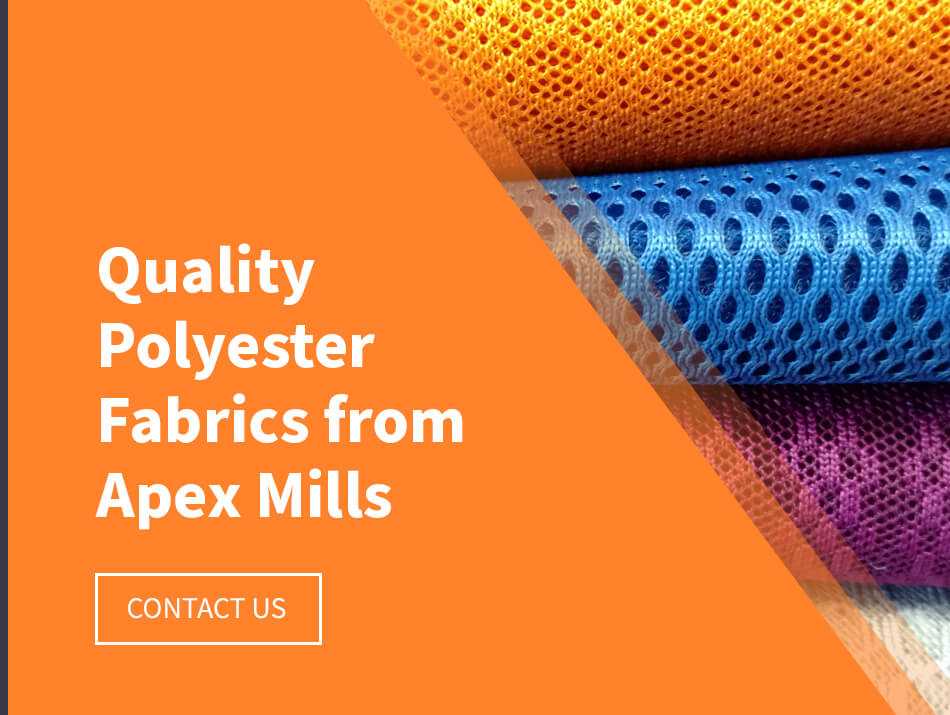
If you’re in the market for polyester fabric solutions, Apex Mills can help. Our fabric specialists have satisfied customers in various fields from health care to the military, achieving the textile solution necessary for their specific needs.
Contact our team today to find out how we can customize a solution for you.
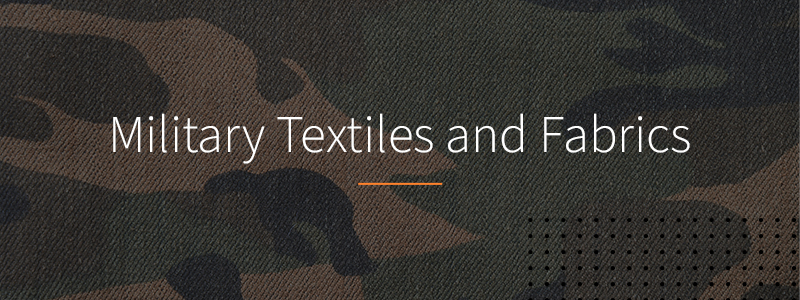



Reach your most challenging
textile goals with confidence.